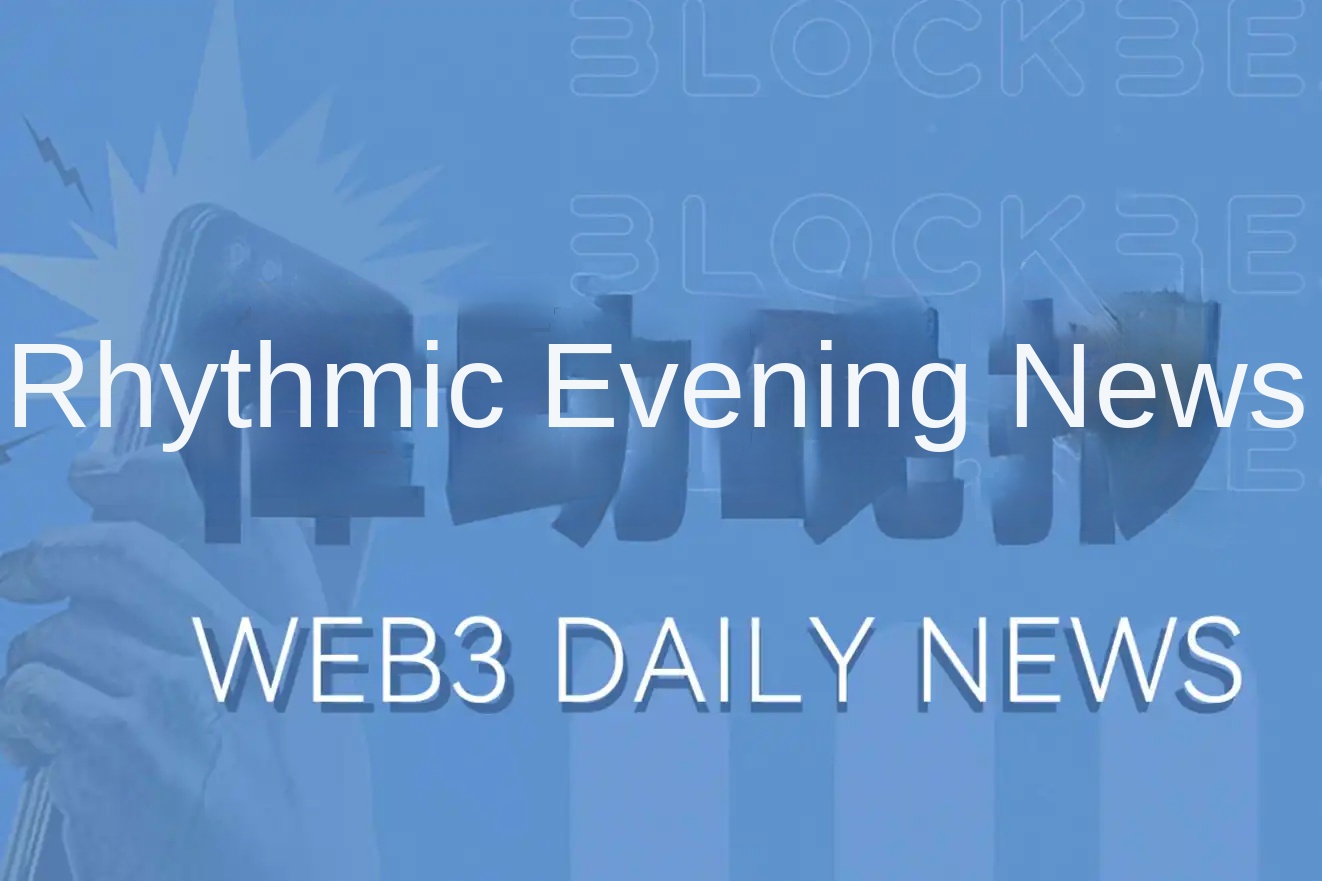Insights from OFR Partners at EthCC: VCs and ZK Everywhere, Ethereum Takes a Big Step Forward.
Original Title: "One Giant Step Towards 'Settle Down'"
Original author: JX, OFR partner.
I made two Meme pictures to represent my most intuitive experience at EthCC, which also reflects the current situation in the industry:
The number of encrypted VC is too large, to the extent that a unicorn project with a valuation of over 1B in a certain private placement has implemented a "VC not allowed inside" policy for the Side event held. Unfortunately, these sessions are open to dogs. Therefore, VC might as well...
Almost all projects that started developing applications half a year ago, whether it's games, NFTs, or Social, have expressed that they are starting to work on the underlying infrastructure, using ZK in every pore, which is very smooth. Don't believe it? Come and try our new Odyssey.


What’s New
During the EthCC conference, many projects released updates and progress reports. Here are some that I personally think are worth paying attention to:
1.Chainlink CCIP - "Encapsulation"
The leading player in the middleware field, Chainlink, announced its entry into the cross-chain direction during the EthCC conference on July 20th, following its success in the Oracle field. Its cross-chain exchange protocol, CCIP, has officially launched and supports the testnets of Ethereum and four mainstream EVM L2 chains. Interestingly, this version is not called a testnet or beta version, but rather referred to as the Mainnet Early Access phase.

CCIP Overall Architecture Diagram
The overall architecture is divided into two parts: off-chain and on-chain. Off-chain uses Chainlink's DON node network to submit and verify Merkel Proofs for cross-chain transactions, ensuring the finality of transactions on the original chain and meeting the risk control requirements of active risk control nodes (ARM) for cross-chain transactions.
Do you cross-chain project insiders feel familiar with the architecture in the above picture? The following picture is the structure diagram of Layerzero, which is currently valued at 3 billion US dollars: Layerzero's structure diagram.

Layerzero Structure Diagram
Off-chain part: Relayer corresponds to Executing DON, Oracle corresponds to Committing DON;
On-chain part: Communicator corresponds to Router; Validator and Network correspond to on/off ramp. Chain A and Chain B correspond to two token pools.
The main cross-chain architectures of the two can almost be matched one-to-one, with the difference being that Chainlink's CCIP adds an additional layer of Rust-implemented Chainlink contracts and independent nodes to independently audit cross-chain transactions. More importantly, the Oracle used by Layerzero at the underlying level is currently Chainlink.
This operation, using the latest popular terminology, can be seen as Chainlink "enshrining" Layerzero.
2.Uniswap X - "Decoupling"
Uniswap team is slow in token empowerment, but very active in product innovation. After announcing the Uniswap V4 product plan in June, they launched a new product, Uniswap X, on July 17. To give an imperfect analogy, Uniswap V4 is like Apple releasing a new generation of iPhone, with the predecessor being Uni V3, while Uniswap X is like a new product line similar to iPad released by Apple.

Uniswap X Product Architecture Diagram
Uniswap X's core feature is outsourcing the routing of trades and aggregation of trades to a new participant called Filter. Filter works together with Uniswap's Router to execute the tasks of accepting and matching orders. Filter can be a trade aggregator like 1inch, a market maker, an individual, or even an MEV Searcher. With the existence of a bidding mechanism, any potential MEV losses for traders will be compensated during the bidding process, thus internalizing the value of MEV.
The concept of decoupling system components to reduce the complexity of the core system is also the essence of Uniswap V4. Uni V4 decouples the establishment of liquidity pools from the core system and assigns it to a new role called Hook. The Hook defines personalized rules for liquidity pools, thereby meeting the flexible needs of users while maintaining the stability of the core system.
The same system design logic is also in Ethereum's Rollup-centric roadmap, gradually putting transaction scalability into various Rollup L2 design ideas, and continuing to decouple data availability, which also provides a lot of space for the birth of L2 and DA projects.
Of course, Uniswap X also brings important functional improvements to enhance user trading experience, such as Dutch auction orders, cross-chain transactions, and the Permit2 transaction fee optimization module. It is also worth mentioning that Uniswap X defines the underlying trading object as a signed order, setting the tone for an intent-centric on-chain trading model.
3. Towards the Modular Blockchain Era - Endgame
With the launch of numerous Layer2 mainnets this year, many have also chosen to announce important milestones for their products during the EthCC conference, marking the official arrival of Ethereum's modularity era.
· ConsenSys' subsidiary Linea launches Alpha Mainnet
· Bybit-incubated Mantle launches Alpha Mainnet.· Following OP Stack and Arbitrum Orbit, Starknet has also released its own Starknet Appchains https://twitter.com/Starknet/status/1681603967787122688?s=20.Starting from around 2020, the trend of modularity in Ethereum can be foreseen with the establishment of the Ethereum Rollup-Centric roadmap. This Ethereum scaling method, which uses Rollup to handle transaction loads, breaks down the components of the all-powerful (Monolithic) chain and distributes them to the modular chain system. Vitalik referred to this as Ethereum's Endgame. (Subsequently, the term Endgame also became a hot topic in Web3 and was frequently repeated, such as in MakerDao.)

Ethereum's future will not only exist as a chain or L1, but as a highly secure DA layer and consensus layer solution. As Bankless founder Ryan said, "The Ethereum main chain is not for users, but for the chain," specifically for different Rollups and Raas platforms.


A modular ecosystem centered around Celestia perspective.
And the focus of the builders of blockchain infrastructure in the future will also shift from various L2s to the various components of modular blockchains. This can be seen from the changes in speakers at the Modular Summit over the past year: more decentralized sorters, faster execution layers, and frameworks that adapt to different types of Rollups, etc.

In addition, there are many new releases at this EthCC conference, such as Lens V2 and Gnosis Card, etc. However, since the focus of the conference is still on infrastructure, this article will not go into too much detail.
To Be Continued:
Vitalik's speech at the main venue this time was about the development history of Account Abstract. There weren't many new things, but his speech on Aggregation at the Modular Summit was more interesting in my opinion. He mentioned that one of the major benefits of ERC4337 is the use of BLS aggregation signatures, which greatly reduces transaction size and saves Ethereum's block space. Similarly, there is a lot of work being done to use SNARK proofs for aggregation to improve efficiency. The theoretical and technological progress in aggregation may be the breakthrough point for future Rollup upgrades.

EthCC, one of the largest side events, Modular Summit, had a whole day dedicated to discussing PBS (Proposer-builder separation), which is a well-known topic. The Ethereum Foundation's R&D roadmap, which can be summarized as a heart-shaped diagram, is divided into two major categories: in-protocol and out-protocol. The specific content is somewhat complex and will require a separate article to explain. You can find the roadmap here.

Looking forward to the future, let's take a look back at "yesterday". At the 2022 EthCC conference, Vitalik expressed his hope for Ethereum to eventually "Settle Down", which means enhancing system compatibility, reducing complexity, and achieving a balanced and stable long-term operation. If Ethereum was at the starting point of a steep climb last year, as Vitalik said, then this year, Ethereum has taken a big step towards the summit.

(Who said the scenery at the mountaintop is Cosmos'? Come forward)
Related Links:
https://vitalik.ca/general/2021/12/06/endgame.html
https://rainandcoffee.substack.com/p/the-modular-world
https://modularmedia.substack.com/p/modular-summit-2023-recap
https://www.stackup.sh/blog/understanding-aggregators-in-erc-4337
https://eprint.iacr.org/2019/1021.pdf
https://twitter.com/Louissongyz/status/1653770344694415362
https://eprint.iacr.org/2021/529
https://www.alexbeckett.xyz/stateless-rollups/
https://github.com/flashbots/pm/issues/98
https://medium.com/fourpillars/mev-burn-roadmap-after-pbs-8867d53ae25
Source Link
Welcome to join the official BlockBeats community:
Telegram Subscription Group: https://t.me/theblockbeats
Telegram Discussion Group: https://t.me/BlockBeats_App
Official Twitter Account: https://twitter.com/BlockBeatsAsia
 Forum
Forum OPRR
OPRR Finance
Finance
 Specials
Specials
 On-chain Eco
On-chain Eco
 Entry
Entry
 Podcasts
Podcasts
 Data
Data


 Summarized by AI
Summarized by AI






